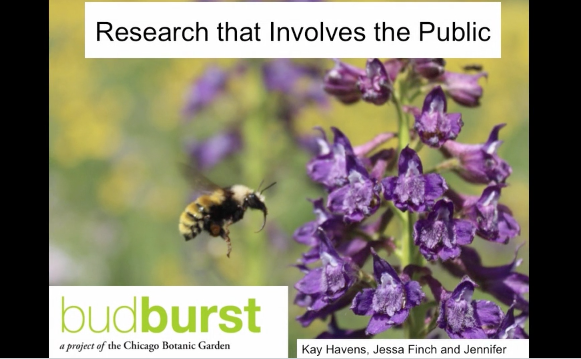
Kay Havens, Chicago Botanic Garden Plant conservation is promoted through outreach and advocacy. One way to cure plant blindness is by engaging the public in authentic research, as illustrated by the Bud Burst citizen science program. After 10 years of crowdsourcing phenology data, Bud Burst managers decided they could better engage the public by bringing them […]
Read More…

Jeremie Fant, Chicago Botanic Garden This talk highlights the Chicago Botanic Garden’s work on adapting zoo conservation approaches for exceptional plant species. Challenges in ex situ conservation include genetic issues that arise from limited numbers of individuals and founders, and husbandry and hybridization issues encountered during the growing out of collections. A significant advantage in plant conservation is that seeds can be collected […]
Read More…
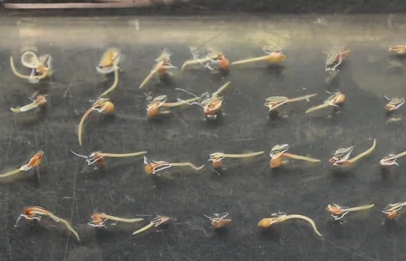
Germination Testing Program Cheryl Birker, Rancho Santa Ana Botanic Garden The California Seed Bank at Rancho Santa Ana Botanic Garden has a germination testing program to monitor the viability of its many conservation seed collections. Germination tests are conducted on all incoming seed collections before they are placed in freezer storage, and for all rare […]
Read More…
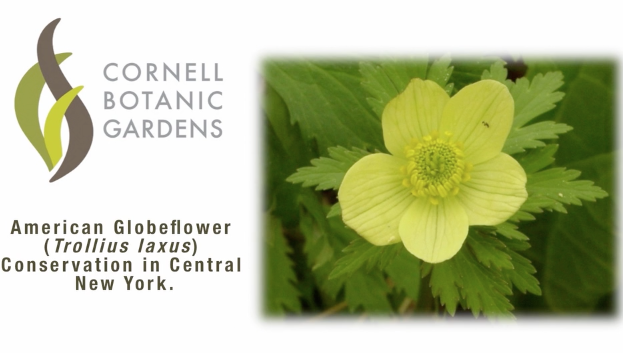
Todd Bittner, Cornell Botanic Gardens Cornell Botanic Gardens has been working to conserve American Globeflower (Trollius laxus ssp. laxus) ex situ through seed banking efforts across multiple populations and in situ within two Garden-owned natural areas. The in situ conservation work has primarily focused on habitat protection and invasive species, deer, and nuisance beaver control. […]
Read More…

Jennifer Ceska, Heather Alley, Jim Affolter, and Jenny Cruse-Sanders, The State Botanical Garden of Georgia The Connect to Protect for Biodiversity philosophy and the educational and horticultural methodology launched in Georgia in 2014 from Athens and has spread like a Monarchs on the wing across the entire state since. Georgia gardeners have tremendous opportunity to […]
Read More…

The Botanical Research Institute of Texas (BRIT) is in the process of constructing a seed conservation laboratory and seed bank. While BRIT has been active in conservation for decades and has partnered with regional seed banks to conserve rare species, BRIT has never had a dedicated seed laboratory on site. The goal of the BRIT […]
Read More…
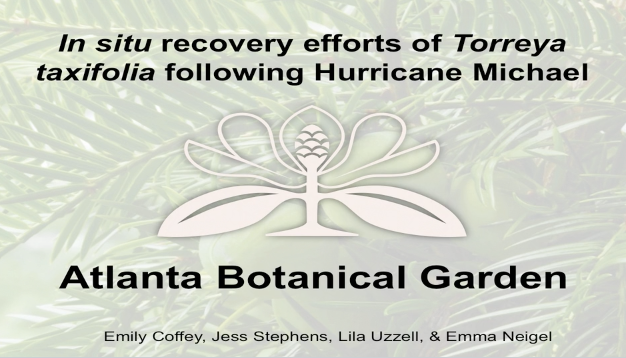
Emily Coffey, Atlanta Botanical Garden In October 2018, the Florida panhandle and southwest Georgia were devastated by Hurricane Michael, a Category 4 hurricane with wind bursts up to 200 mph. The entire native range for the critically endangered Florida Torreya (Torreya taxifolia) lay within the hurricane’s path. Initial reports from the U.S. Fish & Wildlife […]
Read More…
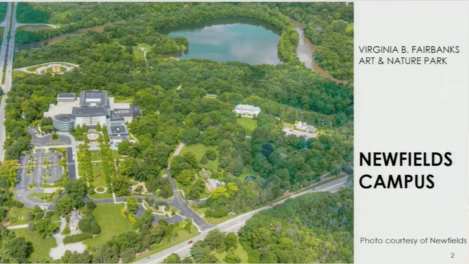
Chandler Bryant, Newfields Newfields, formerly known as the Indianapolis Museum of Art, is a 152 acre campus 5 miles from downtown Indianapolis, Indiana. While we still focus on collecting and displaying art in the Galleries, Gardens, and the Park, we are now doing more than ever with plants. Our greenhouse focuses on plant education and […]
Read More…

Recently updated Best Plant Conservation Practices to Support Species Survival in the Wild detail guidelines for seed collection of rare plants. These include multiple aspects to consider in making seed collections regarding target species characteristics, collection timing, seed collection amount, population genetics and maintaining site quality. Here we outline seed collections for two species for […]
Read More…
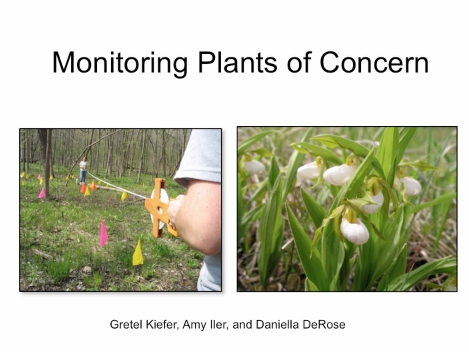
Daniella DeRose, Chicago Botanic Garden Chicago Botanic Garden’s Plants of Concern (POC) program is a collaboration between citizen scientists, natural resource managers, and researchers to collect data on rare plant populations in northeastern Illinois. The primary goal is to identify best conservation practices, while creating awareness and providing education on why conservation matters. POC engages […]
Read More…

Jennifer Ramp Neale, Denver Botanic Gardens Alpine plants are at risk of population decline and/or extinction due to climate change. Understanding these plants and the environments in which they survive and thrive involves a multi-tiered approach including in-situ and ex-situ efforts. At Denver Botanic Gardens we are working to collect and study seed of alpine […]
Read More…
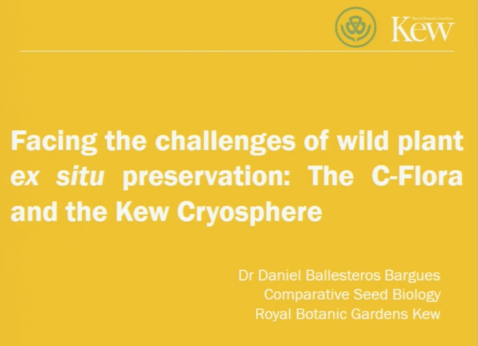
Daniel Ballesteros, Millennium Seed Bank Partnership at Royal Botanic Gardens Kew Wild plant species are highly biodiverse. Biodiversity is typically measured as variation at the genetic, species, and ecosystem levels. But, as a consequence, wild plant species are also highly diverse in their responses to preservation, and ex situ conservation of a wide range of […]
Read More…
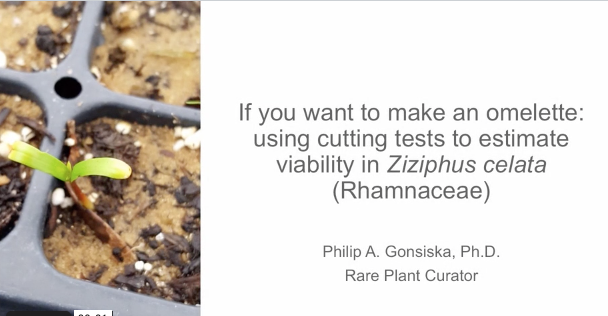
Philip Gonsiska,Bok Tower Gardens Ziziphus celata is an endangered shrub endemic to Polk and Highlands Counties in central Florida. Germination in this species has generally been very low, and previous observations have suggested that upwards of 75% of seeds set by Z. celata may not be viable. In January 2019, cutting tests were conducted to […]
Read More…
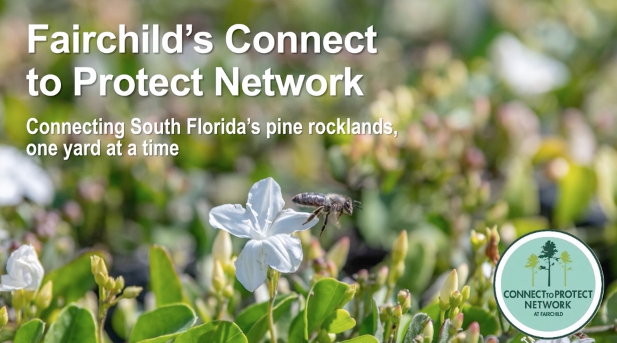
Jennifer Possley, Fairchild Tropical Botanic Garden For over a decade, Fairchild’s Connect to Protect Network (CTPN) has inspired South Florida residents to plant native pine rockland plants in order to help connect the few remaining isolated fragments of pine rockland—a globally critically imperiled (G1S1) plant community. CTPN members include more than 700 individuals and approximately […]
Read More…
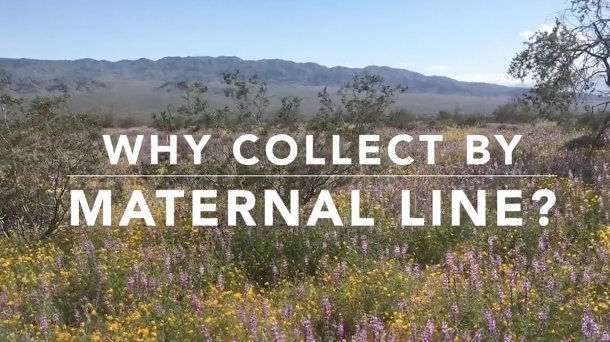
Conservation seed collections support species’ survival by acting as an insurance policy in the face of extinction. They can also provide resources for research, restoration and reintroduction. A high-quality conservation seed collection has both depth and breadth – capturing genetic diversity within and geographic diversity among populations. Collecting and storing seeds by maternal line (i.e., […]
Read More…
















